Reef Manta Rays in the Indian Ocean Region
Project Overview
The decline in reef manta rays (Mobula alfredi) populations by fisheries, coupled with their conservative life-history traits including slow growth, late maturity, and low fecundity has led to their listing as Vulnerable to extinction on the IUCN Red List of Threatened Species. Effective conservation of the species relies heavily on understanding the natural biological and oceanographic processes which drive habitat use. However, human activities such as pollution, overfishing and habitat degradation can dramatically distort natural ecosystem functioning hindering our ability to identify crucial links between the species habitat use and biophysical factors. To understand these links, we need to be able to study the reef manta ray in an environment where human influence is minimal.
The Chagos Archipelago is relatively untouched by direct human influence. As such, it has one of the world’s most pristine marine environments. The subpopulation of reef manta ray (Mobula alfredi) that inhabits this region offers the Manta Trust a unique opportunity to study the species in a near-natural environment where the association between environmental variables, distribution and behaviour can be developed to help understand the effects of human pressures and inform conservation management planning for the species throughout their entire range. To achieve this, the Chagos Archipelago Manta Project has been established which will be tracking reef manta rays in the Chagos Archipelago using photo-ID techniques and a suite of electronic and acoustic tags which will be integrated with long-term, in situ oceanographic monitoring with a focus on the manta aggregation site at Egmont Atoll. This integration of bio-logging data, stable isotope analysis and oceanographic information will help us learn more about how this species utilises the archipelago’s ecosystems, which environmental cues dictate their movements, and what role the Chagos Archipelago’s marine protected area plays as a reef manta ray refuge within the Indian Ocean.
This research will help identify crucial links between the biological and oceanographic processes that influence reef manta ray habitat use. This is essential for developing effective conservation strategies for the species throughout their range
Key Facts
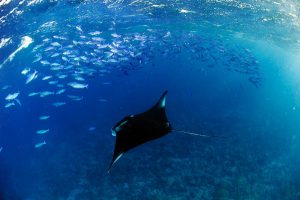
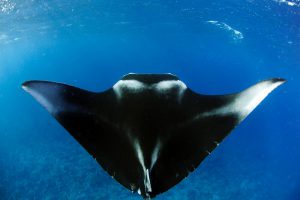
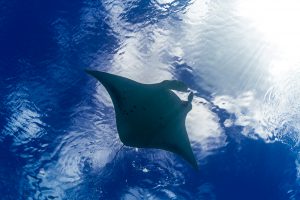
Publications
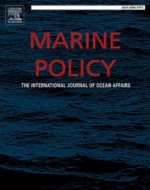
The Illegal Exploitation of Threatened Manta and Devil Rays in the Chagos Archipelago, One of the World’s Largest No-Take MPAs
Harris, J.L., Stevens, G.M.W. (2024). The illegal exploitation of threatened manta and devil rays in the Chagos Archipelago, one of the world’s largest no-take MPAs. Marine Policy.

First Records of the Sicklefin (Mobula tarapacana), Bentfin (Mobula thurstoni), and Spinetail (Mobula mobular) Devil Rays in the Chagos Archipelago
Harris, J.L., Collins, C., Spalding, M., Stevens, G.M.W. (2024). First records of the sicklefin (Mobula tarapacana), bentfin (Mobula thurstoni), and spinetail (Mobula mobular) devil rays in the Chagos Archipelago. Fish Biology.

Spatial and Temporal Variations in Reef Manta Ray (Mobula alfredi) Meso-Scale Habitat Use and the Implications for Conservation
Harris, J.L., Hosegood, P., Embling, C.B., Williamson, B.J., Stevens, G.M. (2024). Spatial and temporal variations in reef manta ray (Mobula alfredi) meso-scale habitat use and the implications for conservation. Aquatic Conservation.

Dynamical Oceanographic Processes Impact on Reef Manta Ray Behaviour: Extreme Indian Ocean Diople Influence on Local Internal Wave Dynamics at a Remote Tropical Atoll
Robinson, E., Hosegood, P., Bolton, A. (2023). Dynamical oceanographic processes impact on reef manta ray behaviour: Extreme Indian Ocean Diople influence on local internal wave dynamics at a remote tropical atoll. Progress in Oceanography.
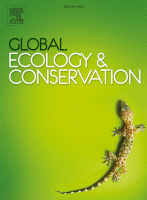
Intraspecific Differences in Short- and Long-Term Foraging Strategies of Reef Manta Ray (Mobula alfredi) in the Chagos Archipelago
Harris, J.L., Embling, C.B., Alexander, G., Curnick, D., Roche, R., Froman, N., Stuhr, M., Fileman, E.S., Hilbourne, S., Carter, R., Murray, A., Savage, J., Stevens, G.M.W. (2023). Intraspecific differences in short- and long-term foraging strategies of reef manta ray (Mobula alfredi) in the Chagos Archipelago. Global Ecology and Conservation.






